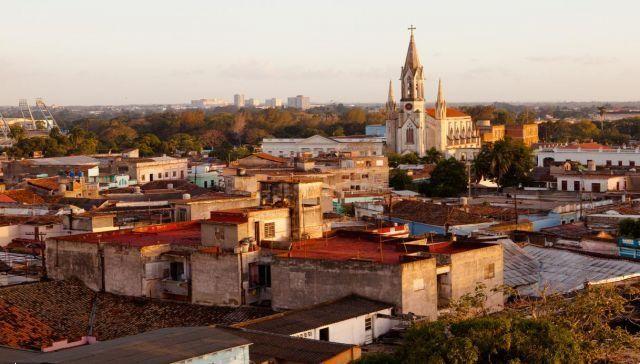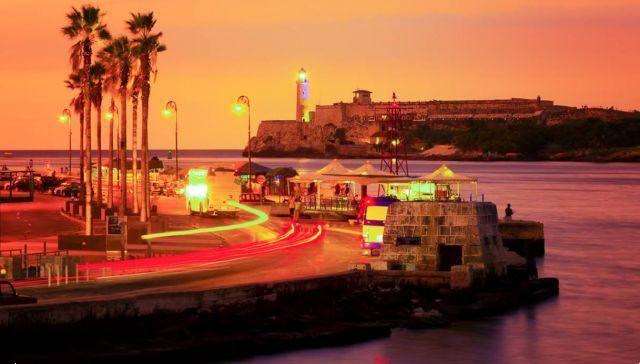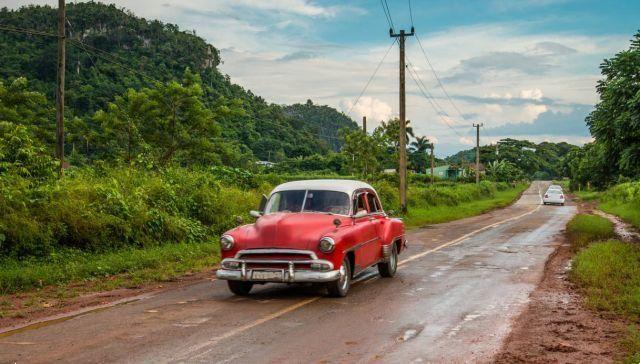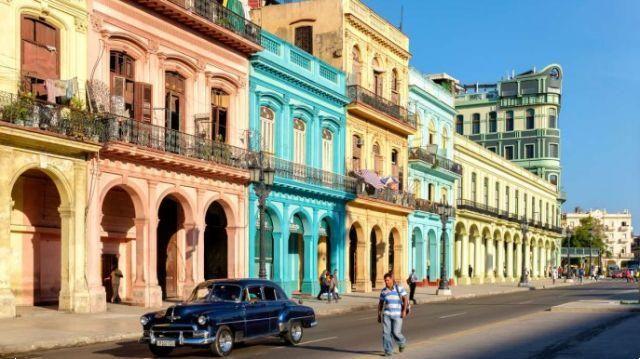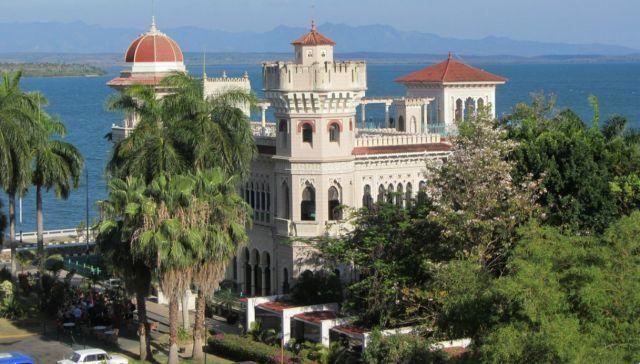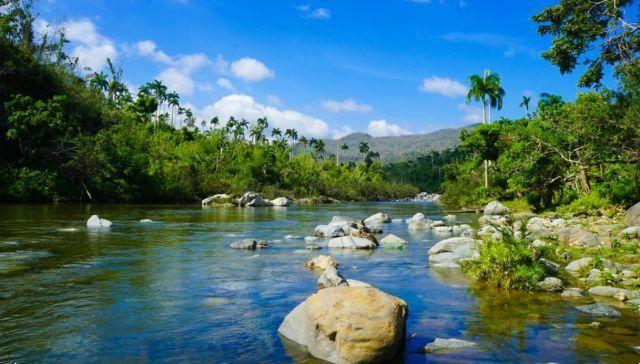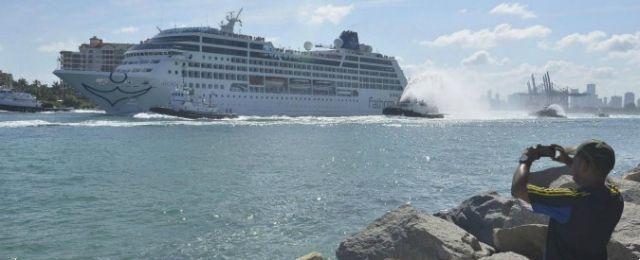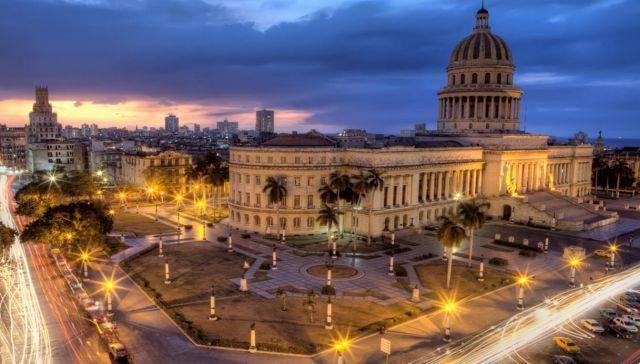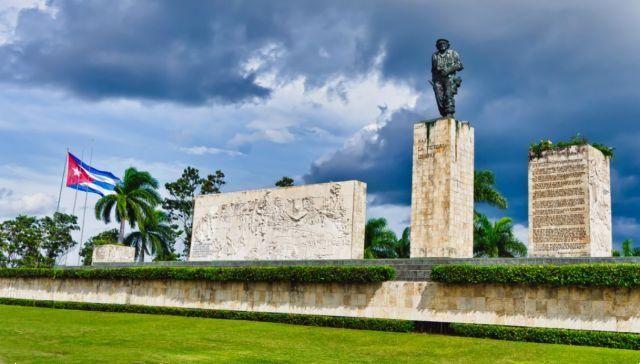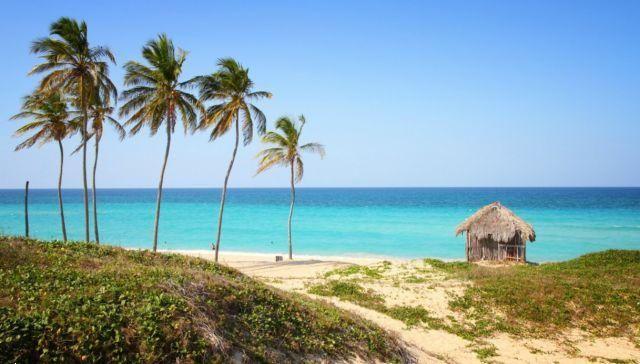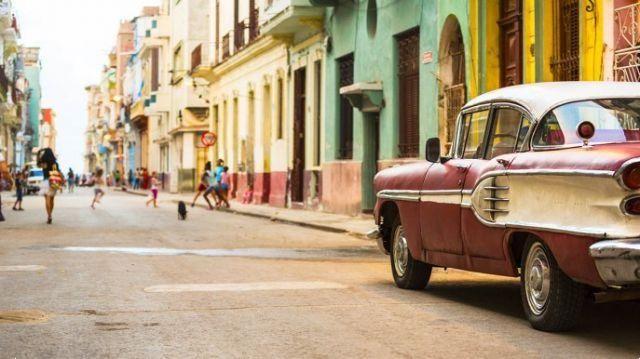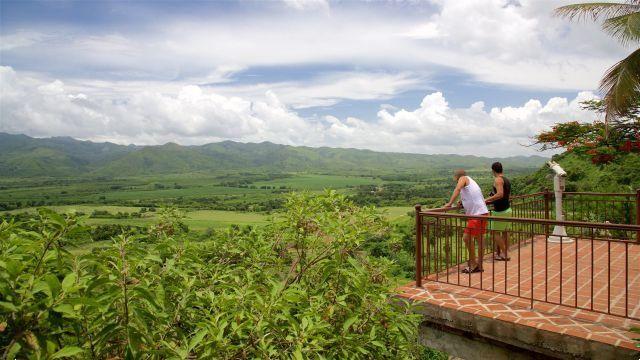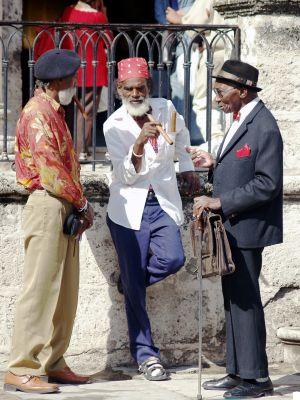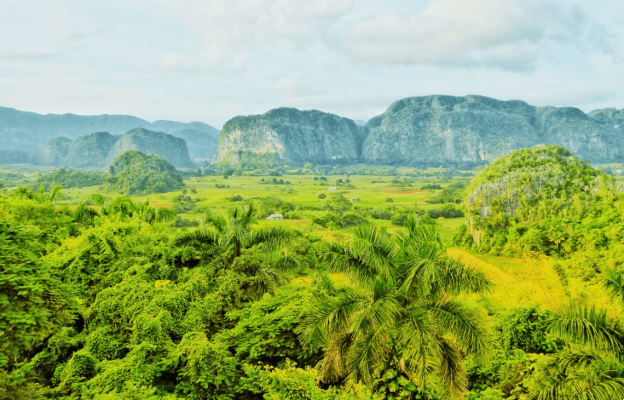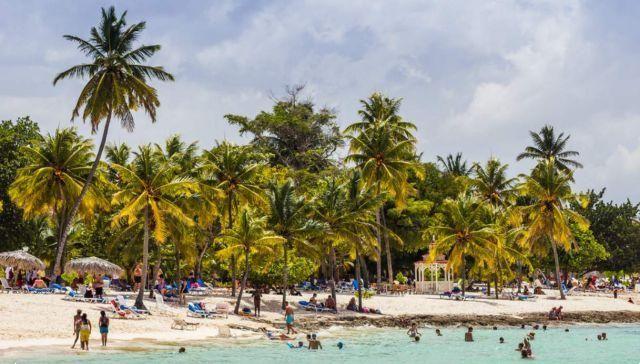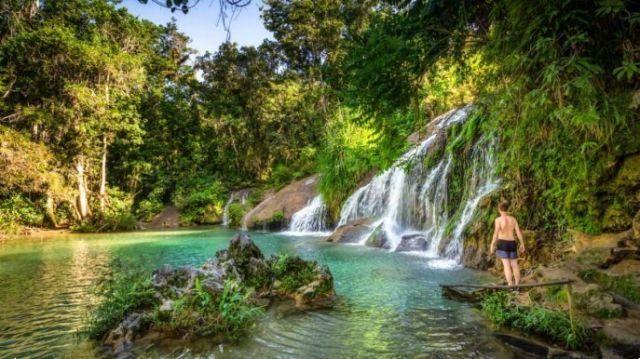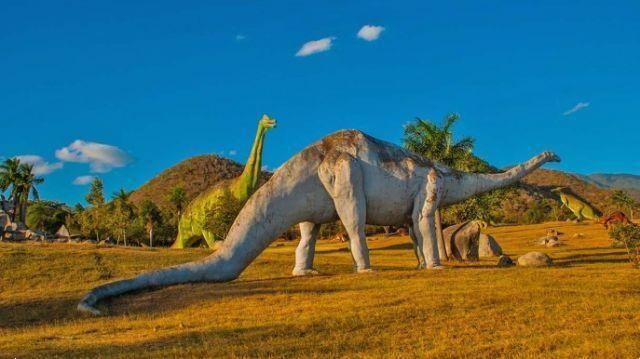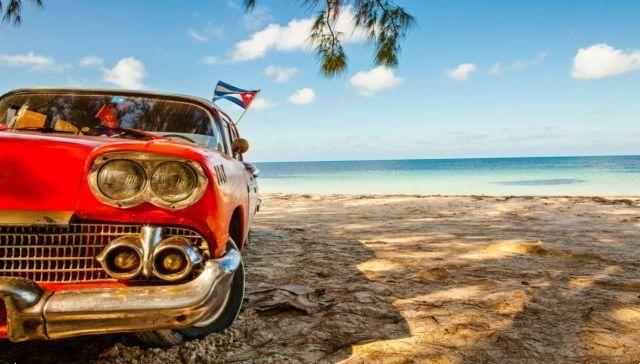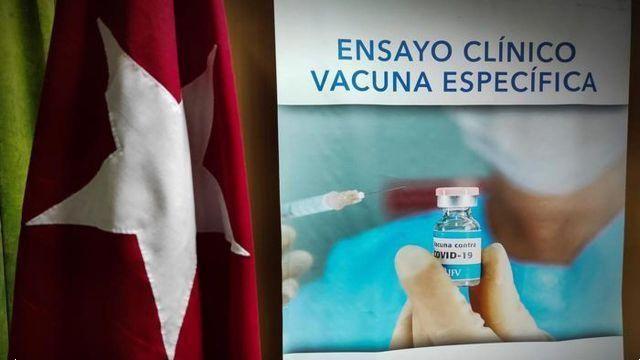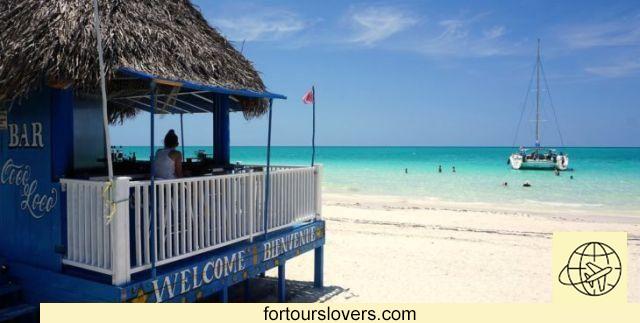
Cuba
12 things to do and see in Cuba and 3 not to do"This island is the most beautiful land that human eyes have ever seen". These are the words spoken by Christopher Columbus after seeing Cuba for the first time, on October 27, 1492. A feeling of amazement that has spanned the centuries unscathed, despite the countless historical adventures of which the largest island in the Caribbean has been the protagonist up to the present day. Spanish domination, the slave trade, the monoculture of sugar, political and economic dependence on the United States, the governments of Fulgencio Batista, the revolution of Castro and Che Guevara, the cold war and many other aspects that it would take too long to list here : all matters about which a lot has been written and talked about, to the point of cultivating the illusion of knowing everything about the island even though they have never been there. But yet, just set foot in Havana to be overwhelmed by the same amazement Columbus felt over 500 years earlier. Of course, many other cultural, architectural and social elements have been added to the overflowing Caribbean nature which on the other hand, however, only confirm the irreducibility of the territory to any attempt at stereotyping. Here is ours #MustSeeList of Cuba with the obvious warning, however, that it is a partial list, useful for a first approach to the island. Happy reading.
1 Old Havana
A tour to discover Cuba can only start from Habana Vieja, old part of the capital of the same name, Havana. This is the most touristic area of the city, the one to which the government has allocated many resources for an overall redevelopment of squares and buildings of historical interest. To give impetus to the modernization of the area la UNESCO protection of 1982. The squares are especially worth seeing: Cathedral Square, Parade ground, Old Square e Plaza Franciso de Asis. The first two, in particular, are unmissable stops: Plaza de la Catedral because, as the name suggests, it houses the city cathedral considered the highest expression of Caribbean Baroque; Plaza de Armas, on the other hand, is famous for its book and souvenir markets. It's not over, because the appeal cannot be missed El Capitolio Nacional. The building, very similar to the Washington Capitol, is located in near Centro Havana district. Under the government of Fulgencio Batista it was the seat of the Cuban Parliament; with the rise to power of Fidel Castro, however, it became the seat of the Ministry of Science, paying for the mistrust of the revolutionaries who identified the building with a Yankee symbol. In recent years, things have changed and the renovation of the Capitol has been interpreted by various analysts as a symbolic gesture of conciliation by the Cuban government towards the United States of America. Politics aside, the building is one of the most important symbols of Havana and its restoration must be considered with a view to opening up to tourism and the market economy. Also in Centro Avana we point out the Museum of the Revolution, Fine Arts Museum and Morro Castle which we will discuss more fully in the next point.
2 El Morro-Cabaña complex
Another unmissable stop in Havana is the Complejo El Morro-Cabaña. The Castillo de los Tres Reyes del Morro is the ancient fortress built between the XNUMXth and XNUMXth centuries. Project managerItalian engineer Battista Antonelli, author on behalf of the Spanish royal house of other fortifications along the Caribbean coast. The Fortaleza de la Cabaña, on the other hand, was built in 1764 under the reign of Charles III. The reasons that push tourists to visit this complex of fortifications at the mouth of the port are basically two: the wonderful panorama and the Cañonazo ceremony. Every day at 21pm, soldiers in period uniforms fire one shot each from the fortress's cannons. A ritual that over time has assumed a predominantly tourist significance, attracting numerous visitors, including many cruise passengers. To be seen!
3 Plaza de La Revolucion
Having remembered the beautiful squares of Habana Vieja, one cannot fail to mention Plaza de la Revolucion, in the Vedado district. This square was for years the stage of Fidel Castro's rallies and also hosted the historic visits of John Paul II (1998) and Pope Francis (2015). Not only. It is also the square that houses the memorial dedicated to the independentist Jose Marti, and it is above all the square where there is the Ministry of the Interior with the historic effigy of Ernesto Guevara. A sculpture soon became a global icon with multiple political, social and even tourist implications. In fact, since smartphones, iPhones, SLRs and tablets entered our daily life (almost) there is no trip to Cuba that does not include a shot under Che's charismatic and austere face. However, Plaza de la Revolucion is not the only thing to see in Vedado. Let us remember en passant Avenida Quinta, the road of diplomatic representations, e Tropicana Cabaret, a place famous for its variety with dancers in bright costumes. The latter, in particular, historically refers to the thirty years from 1920 to 1950 when the economic interests linked to alcohol and gambling headed for Cuba to escape the grip of prohibition in the United States. Also in those years, numerous Art Nouveau buildings and villas appeared which gradually extended up to the Malecón Pier, the fascinating promenade of Havana which we will talk more about in the next point.
4 El Malecón
Avenida de Maceo, better known as El Malecón, is the most famous street in Havana. A promenade of about 8 kilometers that almost entirely runs along the northern side of the city. Yet the initial project, dating back to 1901, provided for the construction of a short walk which instead progressively expanded, supporting the building development of the city. Not by chance, on the other side of the road, they arose numerous neoclassical and art nouveaux style buildings that still fascinate tourists who appreciate their architectural elegance, flying over the obvious signs of decay of many of them. The expansion of El Malecón took place under the government of Gerardo Machado, who is also responsible for the construction of the Capitolio Nacional which we mentioned earlier. Despite the political career in the ranks of the separatists who fought against Spain at the end of the nineteenth century, and despite some happy intuitions in urban planning, Machado ended his experience of government in an inglorious way, paying for both the growing authoritarianism and the economic difficulties following the Great Depression of 1929. Its collapse opened the doors to the government of Fulgencio Batista then overthrown in 1959 by Fidel Castro. In conclusion, El Malecón is not only a beautiful street, especially in the evening with its spectacular Caribbean sunsets, but it is also an important piece of Cuban history, whose "weight" is felt just by walking. To be seen!
5 Hemingway Museum
Previously we mentioned the "weight of the history" of Cuba. The thousand vicissitudes of the island as well as in books are continually evoked in the streets, in the buildings and even in the clubs of Havana (do Floridity and Bodeguita del Medio, both frequented by Hemingway). In short, memory plays a fundamental role in the tourist story of the area, and it does not apply only to political events. In fact, in Cuba lived personalities of international importance such as, for example, the Nobel Prize for Literature Ernest Hemingway. The American writer, author of great classics such as "For Whom the Bell Tolls" and "The Old Man and the Sea", is not only named after the tourist port of Havana (Marina Hemingway) but also a museum, set up right in his Cuban home in suburb of Francisco De Paula about twenty kilometers from Habana Vieja. In Hemingway's Cuban home, everything remained as it was: books, desk, typewriter, furnishing objects were left in their place, or rather, they were put back in their place, with the subsequent addition of letters, documents and other finds belonging to the writer. Visit the Hemingway Museum Finca Vigía it means to immerse yourself in the atmosphere of the 40s and 50s of the Caribbean island between fishing trips, drinking rum (both of Hemingway's great passions) and the quiet necessary for a writer to find inspiration for his books. For more information see the place: www.hemingwaycuba.com.
6 Playas del Este
About 10 kilometers of wide coastline, free and devoid of great services, at least when compared to the standards of western seaside resorts. On the other hand, however, the sand is white, the sea is turquoise, the beaches are dotted with palm trees, and you can practice various water sports: from snorkeling to windsurfing, passing through scuba diving. The beaches of Playas del Este are located just about twenty kilometers from the center of Havana and, in addition to being frequented by tourists, they represent a welcome moment of relaxation and fun for the many Cubans who live along the coast. A 20-minute drive from the Malecón there Playa Bacuranao, a small horseshoe-shaped inlet particularly suitable for snorkelers; soon after, Tararà e Playa Megano to finally arrive at Santa Maria del Mar, unanimously recognized as the most beautiful beach in the Este. Obviously there is no shortage of bars and fish restaurants, as well as the possibility of renting umbrellas, sunbeds and deck chairs but, it is worth reiterating, the atmosphere is a bit decadent, in this absolutely in line with much of Havana. Yet, despite some difficulties, the climate is absolutely relaxed, theideal for a relaxing Caribbean holiday.
7 Viñales
If you are a lover of climbing, trekking, horseback riding, caving, bird watching and all the other activities practicable in nature, the Viñales valley, in province of Pinar del Rio, is the right place for you. The town of the same name and the adjacent villages are located about 200 kilometers from Havana and show the rural face of Cuba. In order of importance are tobacco, sugar cane and rice the crops that give the livelihood local population, result of the centuries-old interbreeding between indigenous people, Spanish colonists and African slaves. The cultivation techniques, in most cases, have remained the traditional ones, with little or no use of technology; the same can be said for the houses that maintain an authenticity not of the facade worth to the valley UNESCO protection. To see i mogotes, limestone hills covered with vegetation that stand out in the middle of the cultivated plains. In short, a paradise for nature lovers and for those who are really interested in deepening the thousand aspects of the Caribbean melting pot: from the aforementioned cultivation of cigar tobacco to Cuban music which in this province west of Havana gave birth to some of its greatest performers. Finally, if there is any way, it's worth a jump on Cayo Jutia beach. About 60 kilometers from Viñales, this beach has not yet come to terms with mass tourism. In short, few services and very few accommodation facilities; in exchange, however, white sand, turquoise water and the proverbial Caribbean tranquility. Do not miss.
8 Varadero
From the cigar tobacco plantations of Viñales to the all-inclusive resorts of Varadero. A considerable distance, not only in kilometers (over 300 km) but also economic and social. Varadero, in fact, is the most touristic among the places in Cuba; the favorite of Europeans, Canadians and Argentines for a holiday full of sun, sand and turquoise Caribbean water. Not surprisingly, one of the most common idioms to describe the beach and hotels behind it is that “this is not about Cuba but about the United States”. And, in fact, at least from a geographical point of view, things are really like this: Miami and Florida are just a few hours away by boat (as the crow flies less than an hour flight). As for the things to do and see in Varadero there are not many. Everything revolves around the 20 kilometers of the beach, also known with the topos di Playa Azul. Havana is about 2 hours away by car (or public transport) and therefore, if you want, you can decide to stay in Varadero and then stop in the capital or, better still, divide your stay between the two locations in the order that suits you best. pleases. To be seen!
9 Santa Clara
Ernesto Che Guevara fans on holiday in Cuba have several obligatory stops: one is the sculpture created by Enrique Ávila that stands on the facade of the Ministry of the Interior (taken from the famous photo by Alberto Korda); the other, perhaps even more important than the first, is the mausoleum of Santa Clara about 300 kilometers from Havana. This mausoleum, in fact, is surmounted by aimposing bronze statue of Che Guevara installed in 1987 to celebrate the twentieth anniversary of his death. Furthermore, in 1997, following the discovery of Che's remains in a mass grave, the remains of the Argentine hero and the soldiers executed with him in the unfortunate Bolivian revolution were buried in the mausoleum. Therefore a real place of worship, to visit in combination with "Monument to the Toma of the Tren Blindado" which explains the origin of the link between Che Guevara and the city of Santa Clara. In fact, it was here that on December 29, 1958 Che Guevara, together with his handful of men, managed to intercept and derail an armored train carrying soldiers and weapons in the availability of Fulgencio Batista. It was the decisive victory that allowed the barbudos to make their triumphal entry into Havana. In short, Santa Clara is an unmissable destination for those who want to deepen the political history of Cuba. This, however, without necessarily having to give up the comforts of seaside tourism considering the proximity to Cayo Coco (in the cover image at the top of the article) and the other wonderful islands Camagüey archipelago.
10 Trinidad
Since in 1988 the UNESCO protection, Trinidad has become one of the busiest tourist resorts in Cuba. His is especially fascinating colonial face remained almost intact from the second half of the nineteenth century. The city, in fact, expanded and prospered thanks to the trade of sugar cane which was grown and processed in the nearby Valley of the Sugar Mills. Not surprisingly, Trinidad's main attractions are the Museo Historico Municipal and Iznaga is missing. The historical museum, near the central Plaza Mayor, hosts the riches acquired over the years by the sugar industrialist Justo Cantero. Manca Iznaga, on the other hand, is a 16 meters high tower in the heart of the Valle de los Ingenios from which the working day of the slaves was continuously monitored. In short, if Santa Clara is a fundamental hub for the political history of the island, Trinidad is important for deepening its colonial heritage. Then, as always in Cuba, there is the sea to brighten up the stay. In this specific case, let's talk about Ancón Beach about 10 kilometers from the city (see photo), ideal for a relaxing day under the Caribbean sun. Not to be missed!
11 Cienfuegos
Casas Particulares Cienfuegos, capital of the province of the same name, is also known as "The pearl of the South". What fascinates is above all the elegant old town where French architecture (the city was founded by the Frenchman Louis D'Clouet) and Caribbean spirit are combined. Most of the points of interest are concentrated in the historic center, from 2005 under UNESCO protection. En passant we point out: Palacio de Valle, a princely villa from the early 900s (see photo) which belonged to the Asturian entrepreneur Acisclo del Valle Blanco; Tomas Terry Theater, built between 1887 and 1889; there Catedral de la Purissima Conception and last but not least Castillo de Jagua, a fortress to protect the city dating back to the mid-700th century. In the surroundings, however, the waterfall is worth a visit The niche with adjacent nature trail and the Playa Rancho Luna, a beautiful beach about twenty kilometers away. Rancho Luna is particularly suitable for snorkeling with the possibility, from August to November, to cross the rare whale shark we talked about about the Maldives.
12 Santiago de Cuba
We have stressed several times in the article how much the Cuban historical events - recent and less recent - are also decisive from a tourist point of view. Santiago de Cuba, but the speech can be extended to the entire east side of the island, is further confirmation. There city founded by Diego Velazquez de Cuellar was the first capital of the island; the main square is dedicated to Carlos Manuel de Cespedes creator, in 1868, of the first independence proclamation against Spain; was also theoutpost of the Castro revolution started in 1953 with the assault on Moncada barracks and ended on January 2, 1959 with the entry into the city of Fidel Castro. It is not over because there is theFrench influence and that of African American slaves coming from Haiti at the beginning of the 800th century (we are referring above all to music and to the complex system of magical-religious practices of Santeria). In conclusion, Santiago is the quintessence of the Caribbean spirit, often compared to the American New Orleans for its cultural vivacity and decadent air. To see, the San Pedro de la Roca del Marro fortress designed, like that of Havana, by the Italian engineer Battista Antonelli; The Diego Velazquez's house; The Cathedral of the Nuestra Señora de la Asunción (see photo) and especially the Carneval Museum, a tradition particularly felt in the city.
1 Don't walk around with too much money
Cuba is a safe island. The civil defense system is widespread but not intrusive, so much so that with a joke it is said that the only real danger of the island are hurricanes. That said, the normal precautions already specified many times apply: do not show off valuable jewels, nor show large amounts of money in public places. The official currency is the CUC: Convertible peso although in many tourist resorts it is possible to pay in euros without having to change currency.
2 Pay attention to the choice of casas particulares
In addition to the availability of resorts, hotels and bed & breakfasts in Cuba, it is also possible to stay in casas particulares, private homes with all state authorizations for short-term tourist rentals. The point, however, is that it is not always easy to find the necessary information on the characteristics of the accommodation, so it is advisable to choose a hotel as the first solution and, ultimately, to opt for a casa particular in the various trips around the island. (depending on the itinerary and the type of holiday you have in mind).
3 Don't come for a week
A piece of advice and nothing more since the web abounds with 7-day itineraries in Cuba. However, we must consider the travel times that affect the actual length of stay. Therefore, we suggest at least 10 days. Two weeks is ideal. For more information, please consult the Business Office website.




